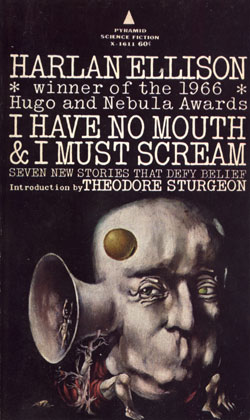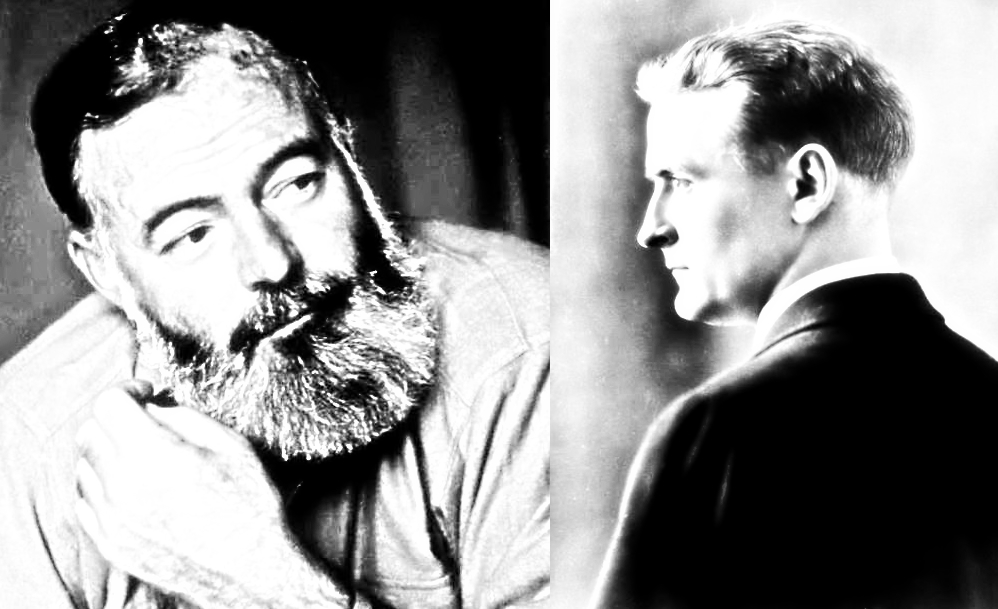I have had lots of experiences in my life where somebody told me about a short story that disturbed them. I myself then avoided that short story for reasons related to my own personal well-being. That’s pretty much how I became familiar with Harlan Ellison’s classic short story “I Have No Mouth and I Must Scream.” The premise itself sounded extremely dark when it was first told to me, and the thought of crippling humiliation at the hands of a god machine sounded spiritually debilitating.
Ellison’s story is disturbing on multiple levels. Granted, he isn’t exactly known for optimistic overtures of mindset. Throughout the story, we get the POV of a maddened machine. We also becomes aware of many different perspectives of human insanity. All of these elements create a horrific look at horror and dystopia.
The short story is an excellent autumn read!
Overview
The story is about a supercomputer, AM, who systematically destroys the planet due to its hate of humanity. It then traps the last survivors under the planet. Afterward, AM makes them immortal. The survivors have been alive for 109 years. Likewise, AM horribly disfigures many of them, and then tortures them endlessly for its own amusement.
There is a lot more to the story, but that’s the brief distillation and I refuse to spoil the whole thing because you simply must go out of your way to read it whether you are an Ellison fan or not. What upsets you or disturbs you may be a decent catalyst for praise or dissent.
Background
If: Worlds of Science Fiction published Ellison’s “I Have No Mouth and I Must Scream” in March 1967. This was a time when technology and the total destruction of humanity were growing concerns for every man, woman, and child on Earth. The Cold War was in a full swing, and it was quite apparent that if the world’s leaders were going to continue behaving as irrational actors then something bad was going to happen. In this case, nuclear annihilation.
Ellison claimed he wrote the story in one pass in an evening in 1966. He also said that it really didn’t change much throughout its publication history. The story won the Hugo Award in 1968 and The Library of America republished it. Additionally, the name for the computer, Ellison said, comes from Rene Descartes’s cogito ergo sum.
“The machine can think and therefore it thinks,” Ellison said. “I think there for I am AM! It also stands for—in the original story—for Allied Master Computer.”
As Ellison summarized on Good Afternoon! in 1976:
The background of the story is that the Third World War starts, and the three major powers (China, Russia, and America) find that the war is so complex that they cannot handle it just with people trying to program it, so they build giant computers to handle all of the tactics. Fearing that they will be bombed, they sink them into the earth far down in caves. Eventually, the computers link up and they take over the world and program the war so that all human beings are killed. And the story is about the last five human beings that are brought down into the center of the Earth into the belly of this giant computer that fills the earth, and it torments them endlessly.”
Takeaway
“I Have No Mouth and I must Scream” is a terrifying story. It’s also a technophobic story about tampering with machinery and creating an omnipotent, hate-filled techno-God, which, realistically, is a story about modern times.
“It is not a pretty story,” writes Charles Brady in “The Computer as a Symbol of God: Ellison’s Macabre Exodus.” “It deliberately violates the taboos on sexuality and violence imposed by an older generation of science fiction writers.”
Joe Parouch in “Symbolic Settings in Science Fiction: H.G. Wells, Ray Bradbury, and Harlan Ellison,” states that Ellison’s story is not an isolated tale for a specific yesteryear at all.
“… AM is the result of a long history of scientific and technological development. Just like the society in which we live today. The story could be read as not being about the future at all. Perhaps it’s really about the present. Aren’t we all harassed and tormented by a technological civilization whose origin, growth and powers we scarcely understand? I suggest that the setting of “Mouth/Scream” symbolizes that technological world in which we are all now trapped …”
(Patrouch)
Indeed, the horror of that epiphany is too profound for me to grasp or want to hold onto, and, frankly, I am okay with setting this story back down if only to return a sense of ease to my life…at least until I feel the need to pick it up again for a quick reminder of the doom that lies in store for humanity.
Works Cited
Brady, Charles J. “THE COMPUTER AS A SYMBOL OF GOD: ELLISON’S MACABRE EXODUS.” The Journal of General Education, vol. 28, no. 1, Penn State University Press, 1976, pp. 55–62, http://www.jstor.org/stable/27796553.
PATROUCH, JOE. “Symbolic Settings In Science Fiction: H. G. Wells, Ray Bradbury, and Harlan Ellison.” Journal of the Fantastic in the Arts, vol. 1, no. 3 (3), [Brian Attebery, as Editor, for the International Association for the Fantastic in the Arts, International Association for the Fantastic in the Arts], 1988, pp. 37–45, http://www.jstor.org/stable/43308002.








